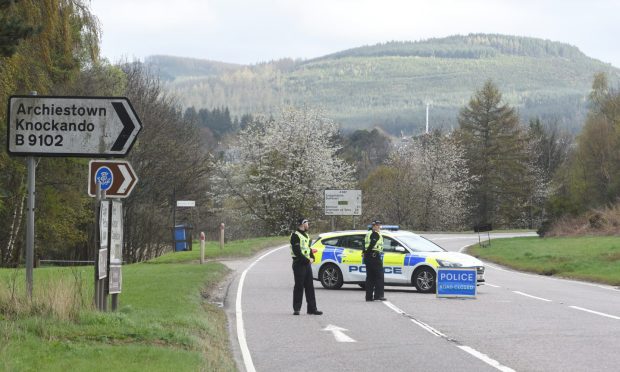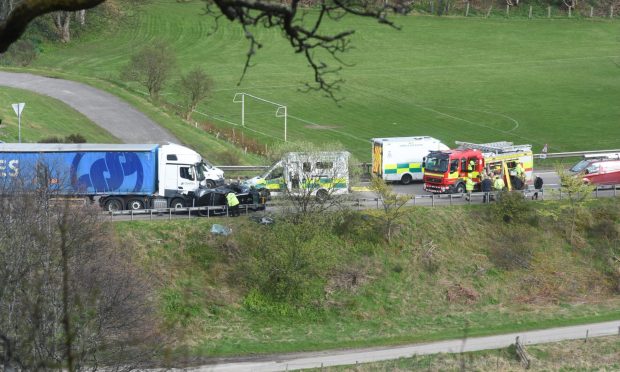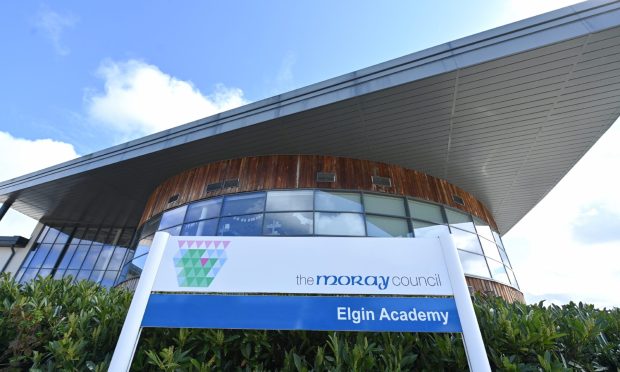Violence in Moray schools is on the rise, with the number of aggressive incidents more than doubling in the space of just one year.
There were 823 “violent and aggressive” disturbances reported to the council in the 2015/16 academic year – up from 377.
The number of pupils responsible for the catalogue of behaviour involved rose dramatically, from 90 to 159.
And 19 of those children accounted between them for a staggering 515 incidents – 63% of all those reported, a report by officers revealed.
Most of the incidents involved attacks on teaching staff and council leader George Alexander last night admitted that schools faced a “difficult” situation.
But he said that the majority of the violent acts were committed by youngsters with “severe social problems” who may not have been part of mainstream education in decades gone by.
It is understood that the children who caused the bulk of the incidents have additional support needs and had lashed out while anxious.
Councillor Alexander said: “There are more and more kids with behavioural problems entering our schools, and associated problems with that are difficult to address.
“These increasing incidents are a symptom of that.
“It should be noted that 51% of all these instances took place at only four schools.
“And the fact that most of these incidents happened at primary schools shows that very young kids are responsible, and their behaviour obviously improves as they grow up.”
Violent outbursts were reported by 24 of Moray’s primary schools and all eight secondary schools during 2015/16.
Those figures also represented an upswing, from 21 and seven respectively the previous year.
Mr Alexander added that the statistics depended on how rigidly problems are reported, and said the importance of keeping records “had been emphasised more in recent years.”
The Forres councillor also explained that teachers were “well trained” in how to deal with tense situations before they spilled over into violence.
But the local representative for the Educational Institute of Scotland teaching union, Susan Slater, said some downtrodden members felt they received insufficent support from bosses.
She said: “I am regularly contacted by members who have been subjected to violence and aggression, and would say that there has been a marked increase in the reporting of such incidents.
“Members usually contact me when they are at the point of being unable to cope and feel that not enough is being done to support them.
“What the statistics don’t indicate is the number of staff who are repeatedly subject to violence and aggression, and whilst I appreciate that it is a small number of pupils invovled, any act of violence and aggression towards staff is unacceptable.”
In 2015, the local authority mooted plans to concentrate youngsters who need additional help into one large school.
Diability campaigners said the ploy could be a boon – provided that children were assigned there on an individual basis.
However, Mr Alexander said the notion had not proved popular with local parents and had since been shelved.
And he praised the region’s current system as the best way of balancing the need for inclusion with also ensuring children with learning problems receive individual care.
Each of Moray’s eight secondary schools have one primary school in their catchment zones which is specially suited to educating children with additional support needs.
And all eight secondary schools have units where children who require extra support can learn.
AT RISK
Revelations on violence in Moray’s schools emerged alongside other figures on health and safety which it was claimed showed many employees are “at risk” of injury.
Alarmed councillors pointed to statistics which showed that safety training sessions intended to be performed two years ago are yet to be carried out.
The classes, designed for supervisors and managers in “high risk” services, had been set a target date of September 2015 but is still to take place.
Elgin City South councillor John Divers said the situation was “not good enough”.
He added: “If something were to happen, this council would be paying out a lot of money.
“We are just three months away from some targets being overdue by two years, that really does concern me.”
Up until November in 2016, the council had recorded 62 slips, trips or falls.
A total of 45 employees had struck a fixed or stationery object, an increase from 15 in 2011.
However, falls from a height halved from 16 to 8 between 2011 and last year.
And injuries caused by manual handling also dropped by half in that period – from 40 to 20.
Worries about the welfare of the authority’s workforce of 5,000 have been compounded by the threat of heavy fines should anyone be seriously hurt on the job.
One passage from a report sent to councillors this week states that courts across the UK are “working to new sentencing guidelines” for health and safety offences which have caused a “seismic shift” in the level of fines being imposed.
However, senior managers defended the figures, and said that incidents had been kept at an “acceptable” level despite some training not occurring.
Head of human resources, Denise Whitworth, said: “There has been work done with supervisors, although specific workshops haven’t all taken place.
“The number of accidents is within an acceptable level.”










